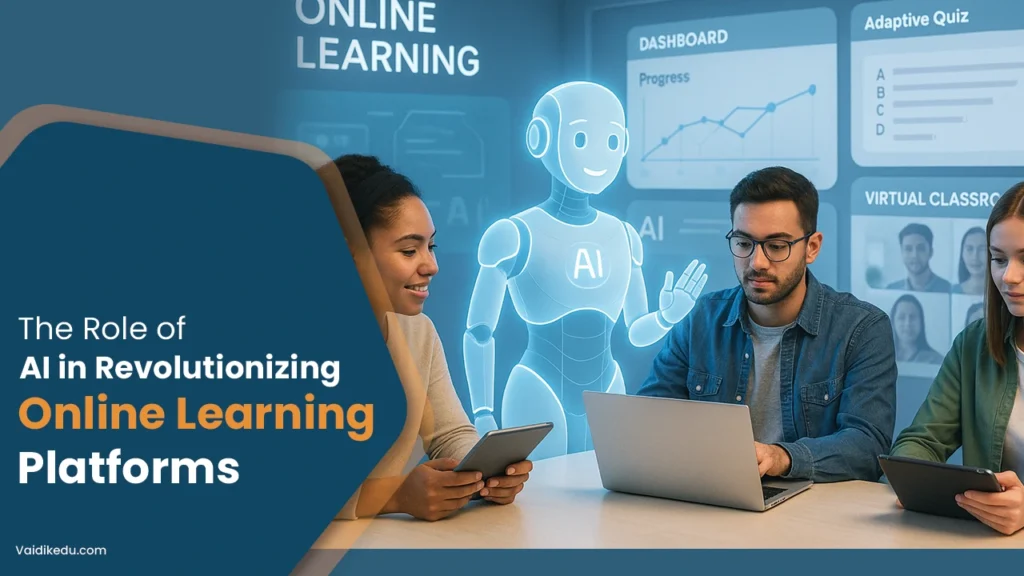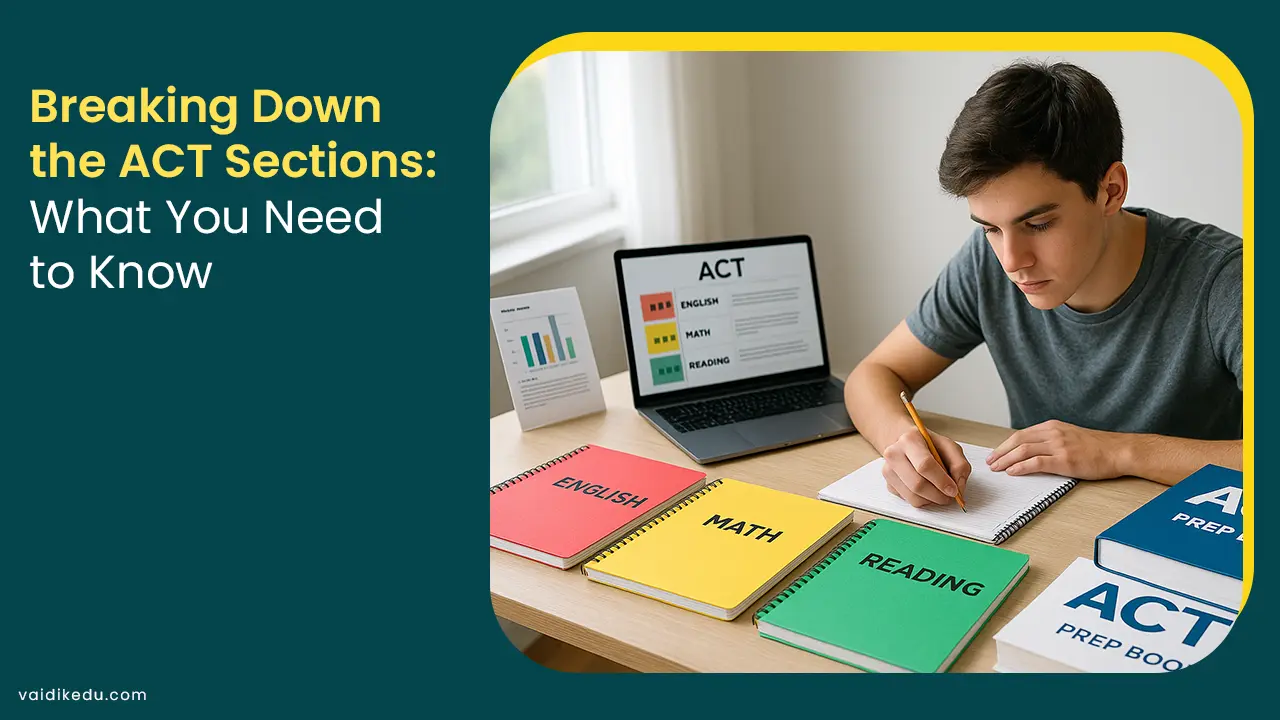Online learning platforms have created a prime position in the fantastic transformation education has undergone in the digital age. These platforms have improved learners’ access to information at any time and from any place because the boundaries of geography do not matter. However, the disruptive transformer in this evolution is AI.
AI is, instead, now a reality that modern man has discovered in education. It personalises learning and automates repetitive tasks while maximising engagement so students can have experiences like none other. This article researches how AI advancement is continually revolutionising online learning to make it more exciting, connected, and effective than it ever was.
Artificial Intelligence In Education:
AI revolutionises the mode of offering education and the experience of education as they merge into online learning systems. Education today is no longer a simple matter of using old techniques to make learning more effective and individualised.
Instead, artificial intelligence transforms learning by automating mundane tasks, creating immersive and engaging experiences, and providing rapid feedback rather than supplementing or supporting it.
It also fills gaps and diversifies education through gamification, virtual tutors, on-demand help, and predictive analytics. This lowers instructor workloads, increases university scalability, and gives students more personalised experiences.
Beyond that, it is not just an affair with convenience but a new shift to yield an ecosystem that will tend to make learning dynamic, enjoyable, and commercially available, waiting for the time when it promises to be more successful for every student.
How AI is Enhancing Online Learning Platforms and Transforming the Educational Experience:
Artificial intelligence is changing online education by providing individualised learning and maximising automation of process efficiency and engagement. By offering virtual tutors, real-time feedback, and other features, AI makes learning more accessible, inclusive, and efficient.
This transition clears the path for a more intelligent and scalable future in education by producing dynamic and customised learning tailored for students while releasing teachers to concentrate their time on meaningful engagements.
1. Custom Learning Paths: AI analyses student information like performance, learning styles, and preferences to provide the personalised learning experience intended. For instance, innovations such as AI recommend courses, modules, or practice exercises based on a student’s level of progress on sites such as Coursera and Khan Academy.
2. Intelligent Content Creation And Delivery: AI works at scale at speed, being able to create materials like quizzes, flashcards and summaries. Content can be engineered concerning its learners depending on ambiguity or complexity as they go through it. Examples: Platforms like Quizlet focus on teaching complex concepts via AI-oriented adaptive textbooks to keep the embedment of concepts engaging and lively.
3. Virtual Tutors And Real-time Support: Virtual tutors immediately check out the help for students when they put up questions and clarify concepts in real-time, competence impacted by AI. Example: Duolingo’s AI coach proofreads and practises suggestions for grammar, giving students their learning activities 24/7.
4. Gamification For Enhanced Engagement: AI features have helped create leaderboards or competition adaptive toggles for difficulty levels, all fun in learning. Prodigy Math is a well-known instance of an educational game with built-in AI.
5. Real-Time Assessment And Feedback: AI grades assignments and tests with instant, excellent feedback. For example, companies with platforms like Turnitin and Grammarly assess writing and make instant corrections and suggestions.
6. Predictive Analytic Improvement Outcomes: AI analyses and tracks learners’ behaviour to forecast performance and areas where learners may struggle. Example: AI dashboards in LMS systems help track the educator’s monitoring engagement and timely interventions.
7. Massive Access To Varied Types of Learners: AI tools will make learning publicly inclusive for learners with disabilities and those with difficulties decoding the written word. Text-to-speech, speech-to-text, and real-time language translation will allow seamless learning for everyone.
8. Scalable And Affordable: AI offers institutions an expansion of educational provision that average students can afford without compromising quality. Examples: Automated course delivery and AI-enabled mentoring lessen recourse to physical infrastructure and thus reduce human resources.
9. Connected And Immersive Learning Experiences: Artificial intelligence uses augmented reality (AR) and virtual reality (VR) to create immersive learning environments. Google Expeditions, for example, offers students virtual field trips to enhance exposure and understanding.
10. Lower Administrative Workload: AI handles repetitive tasks like grading, attendance checking, and curriculum design, leaving educators to spend time with students. For example, AI algorithms automate mundane activities on LMS platforms like Moodle and Blackboard.
AI Impacts The Education:
AI is redefining education in many ways, from collaboration to assessment. One of the significant revolutions caused by AI is its facility for cooperation between students from two separate geographic localities. These platforms will allow students residing in different time zones to collaborate on projects in real time, easing previous difficulties related to distance.
Features such as real-time communication, language switch, and assignment distribution have been integrated into these platforms to enable smooth learning, thus rendering it more interactive and inclusive and, therefore, providing an experience very similar to that of an actual classroom.
These open VR worlds and collaborative tools provide meaningful access to group work and project learning as they support working together at any time and place.
Regarding assessment, standardised tests as a traditional model are now being replaced by AI. Instead of relying on memory and some academic skills, AI assessments are highly personalized and adaptive.
The system presents questions and challenges based on the learning style and pace of various learners, with personalized feedback that helps them grow in those areas. For instance, if a student is struggling with a particular topic, then the AI can use its knowledge base to lower the difficulty of tasks or provide other resources for learning to take place.
Furthermore, AI assessments do far more than assess basic recall of knowledge; they assess higher-order skills in today’s society, including critical thinking, creativity, and problem-solving abilities. This makes them both fairer and more representative of what a learner is capable of.
For collaboration, AI is reshaping the landscape of personalised, conducive assessments. These impressions make learning even more inclusive, engaging, and pertinent for learners in the 21st century.
Challenges And Future Directions:
Integrating AI in eLearning, among other things, boasts numerous advantages but also presents problems with the privacy of information, the vast investments in technology infrastructure, and possible AI bias.
All these problems call for strong data security protocols, equitable access to technology, and continuous research to ensure the ethical practice of AI.
However, as further developments are expected in areas such as emotion AI which can sense and respond to a learner’s emotions and increasingly complex adaptive learning systems, the future of AI looks promising in this field. AI technology can change educational and accessibility heights and efficiency with time.
Conclusion:
Simply put, AI fundamentally reshapes online learning by personalising, streamlining, and enhancing interactions. The implications of that transformation are seen throughout many areas of education instructional material development, assessment of learning milestones, and the overall support of student learning, thus has become an essential aspect of our education system today.
Personalisation with AI-both regarding content and leadership training- enhances personal development and gives training to organisations in strengthening Learning and Development programs again.
Frequently Asked Questions
AI employs analytics and machine learning to grasp a student’s preferences, progress, and struggles. It then serves up personalised content and recommendations and customises the pace, yielding a uniquely tailored learning experience.
By using AI-assisted tools such as text-to-speech or speech-to-text or even offering real-time translation, the achievements of people with disabilities or those who speak different languages have enhanced opportunities designed toward inclusivity.
Concerns centre on privacy, algorithmic biases, and extreme dependence on electronics. Ensuring secure data handling, transparency, and the possibility of human inquiry are necessary techniques for these concerns.
It’s good that AI can decrease the teaching workload and offer support to even the worst-performing classes. Still, there is a lot more to teaching and learning than a mere accumulation of knowledge and a delivery of information.









